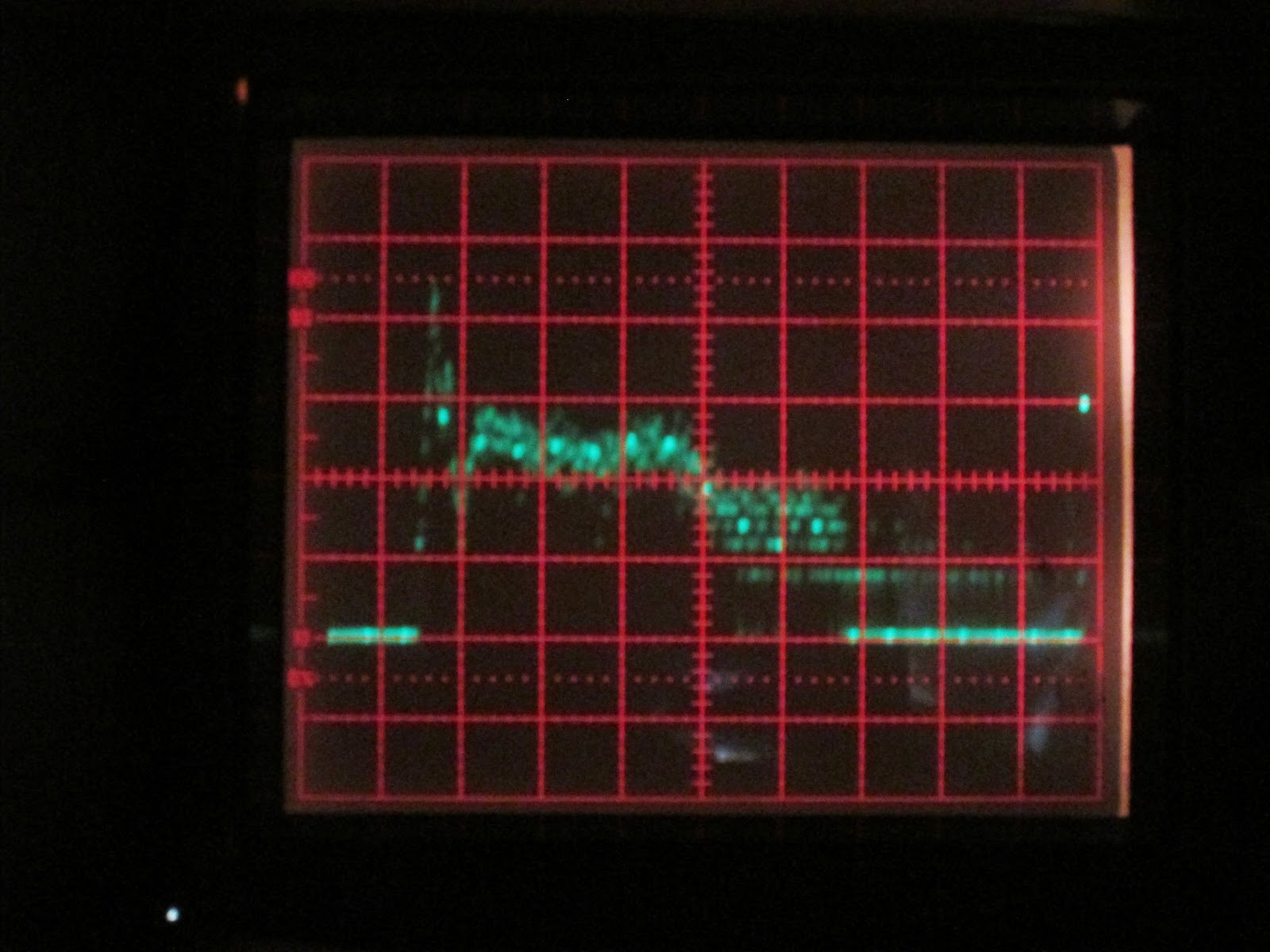Summary:
Much more plunking around with the NaI detector and sources today. A Pb shield was built to eliminate cosmic ray muons as well as potassium 40 radiation from the concreted building. The spectra are much cleaner, but still don't have the count rates or distinctive peaks that are expected.
New to the experiment? Scroll to the bottom to see background and get caught up.
Lab Book
Threshold for the QVT is currently set at -1.49 volts. Remember to divide this by 100 to get the
actual threshold voltage.
A new spectrum recording the lines of all three sources, Cs
137, Co 60, and Sr 90, was started at approximately 10:55.
Took data for about an hour.
Started the Cs 137 only spectrum at about 11:55 AM
Here’s the no-source background from yesterday
In comparison, here’s the 3 source spectrum from this
morning.
The three source spectrum shows peak structure not exhibited
by the background alone.
I forgot to take scope pictures of the Cs137 run. I do
however, have the printout, and will enter the data soon.
A Pb brick shield was built to calm down the background
noise from cosmic ray muons, concrete K 40, and radon.
The source is situated at the base of the NaI crystal as
shown below:
The spectrum from a Co 60 source in the Pb bunker is shown
below. I’ll get the data entered soon.
The photo quality is poor, but I
believe there’s a peak in the middle of the screen.
Finally for today, here’s the spectrum
with the Pb bunker and no source. Note
that it’s much cleaner.
I've played one other trick here
by using the linear output as opposed to the log output that was used in all
the other plots. It makes the spectrum
appear more clean.
Background
Hirsch's theory of hole superconductivity proposes a new
BCS-compatible model of Cooper pair formation when superconducting materials
phase transition from their normal to their superconducting state[1]. One
of the experimentally verifiable predictions of his theory is that when a
superconductor rapidly transitions, (quenches), back to its normal state, it
will emit x-rays, (colloquially referred to here as H-rays because it's
Hirsch's theory).
A superconductor can be rapidly transitioned back to its normal state by placing it in a strong magnetic field. My experiment will look for H-rays emitted by both a Pb and a YBCO superconductor when it is quenched by a strong magnetic field.
A superconductor can be rapidly transitioned back to its normal state by placing it in a strong magnetic field. My experiment will look for H-rays emitted by both a Pb and a YBCO superconductor when it is quenched by a strong magnetic field.
This series of articles chronicles both the experimental lab
work and the theory work that’s going into completing the experiment.
The lab book entries in this series detail the preparation and execution of this experiment… mostly. I also have a few theory projects involving special relativity and quantum field theory. Occasionally, they appear in these pages.
The lab book entries in this series detail the preparation and execution of this experiment… mostly. I also have a few theory projects involving special relativity and quantum field theory. Occasionally, they appear in these pages.
Call for Input
If you have any ideas, questions, or comments, they're very
welcome!
References
1. Hirsch, J. E.,
“Pair production and ionizing radiation from superconductors”,
http://arxiv.org/abs/cond-mat/0508529






Comments
Post a Comment
Please leave your comments on this topic: